Besides the must-see Angkor Wat complex, exploring Cambodia offers access to a vast array of historical sites. These encompass sacred locations such as the Preah Vihear temple and dark destinations reminiscent of Khmer Rouge rule.
Right now, let’s explore the top 7 historical sites in Cambodia with Lux Travel DMC through the article below to enjoy the combination of peaceful beauty and haunting history; from there have a unique and unforgettable travel experience.
1. Angkor Wat – one of the 10 oldest temples in Cambodia
As one of the 10 oldest temples in Cambodia, Angkor Wat is a testament to a prosperous civilization born in the 9th century and reaching its peak in the 12th century by the great king Suryavarman II. The difference of this temple is that the main gate is to the west, in accordance with the architecture and religious beliefs: the west door is the road of death.
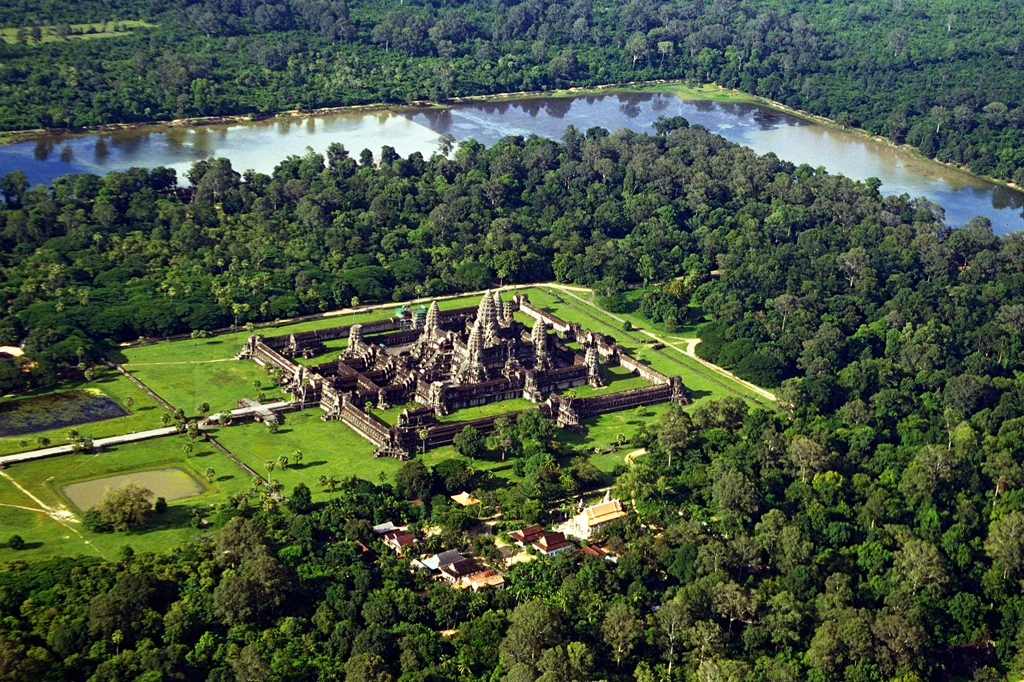
Angkor Wat is one of the 10 oldest temples in Cambodia
Angkor Wat is also a mirror reflecting the development of two of Asia’s most famous and important religions: Hinduism and Buddhism. Initially the building was built as a Hindu temple of the Khmer Empire, and gradually transformed into a Buddhist temple at the end of the 12th century. With many reliefs clearly shown in the architecture, Angkor Wat is a picture that clearly depicts the historical and cultural values of both Hindu and Buddhist religions.
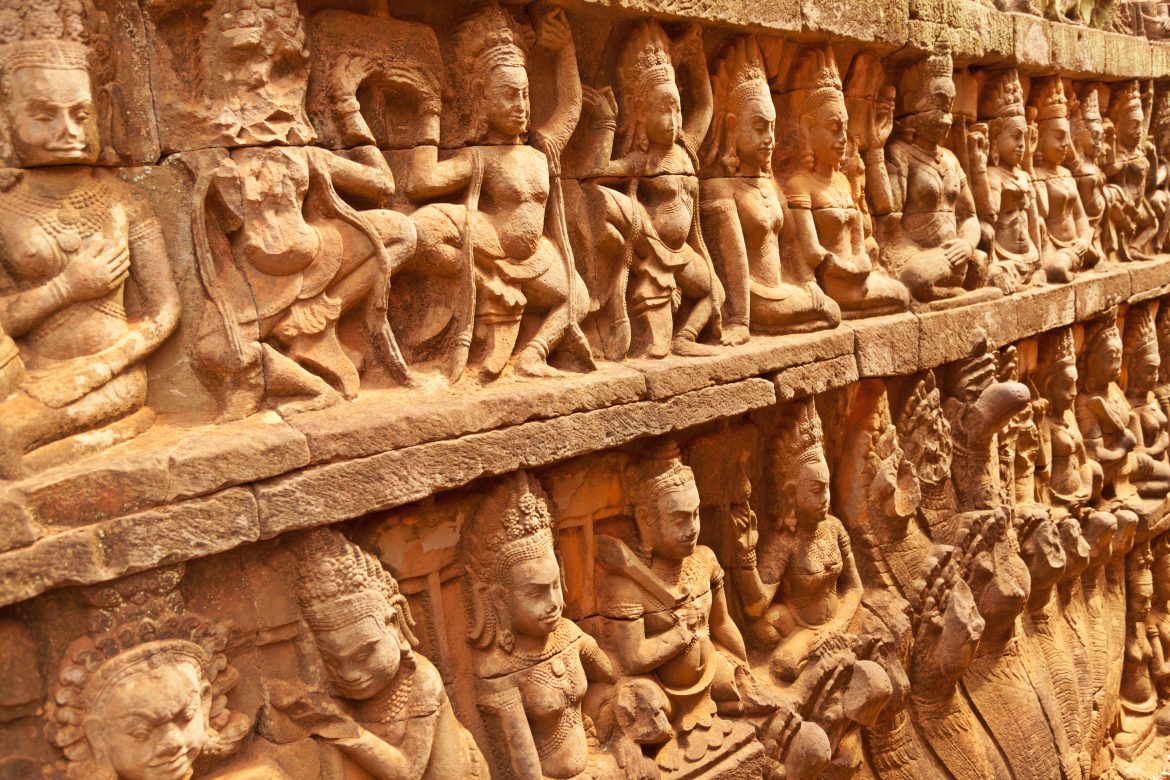
Terrace of the Leper King, Angkor Wat
In addition to Hindu and Buddhist sculptures, Angkor Wat also reveals several inscriptions and reliefs featuring characters from Hindu mythology, as well as numerous images of stone carvings such as giant bas-reliefs, doors, ceilings and roofs, made by the mighty hand of the ancient Khmer, each recounting the creation of time and battle.
Highly recommend: Best of Cambodia 7 days
2. Temple of Preah Vihear
Temple of Preah Vihear (or Prasat Preah Vihear) located on a ridge of the Dangrek Mountain in Cambodia near the border with Thailand. This has been a monastery and an important pilgrimage site in Cambodia for centuries.
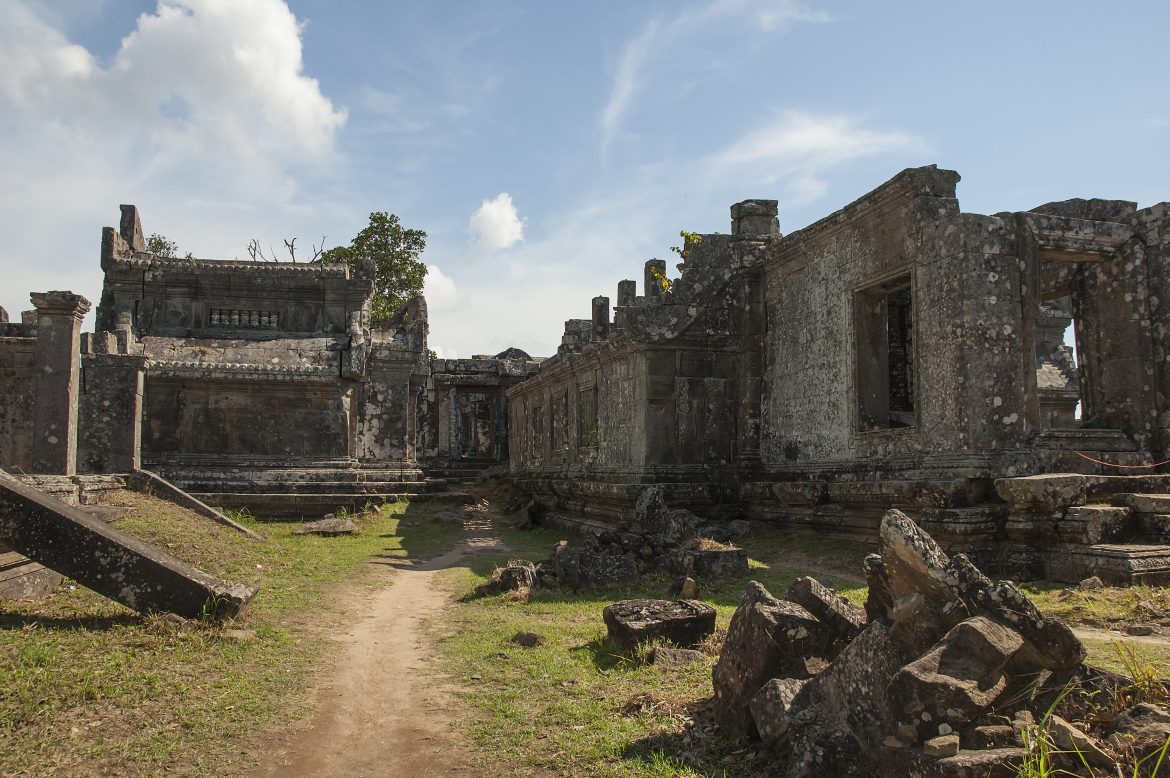
Temple of Preah Vihear has been a monastery and an important pilgrimage site in Cambodia for centuries
The first temple was begun in the early 9th century to worship Shiva, the dominant figure in Khmer Hinduism in the following centuries. Relics found in this province indicate that the area was an important settlement of the Khmer Empire during the 12th century.
The architecture of the temple retains traces of the Khmer style of the early 10th century and the Banteay Srei style of the late 10th century, while most of the monuments were built in the 11th century. The complex architecture of the temple ruins follows a north-south axis with three steps leading to the main shrine located at the top of the mountain. According to Sanskrit inscriptions, under Suryavarman II, the Preah Vihear temple was used for religious purposes with many religious ceremonies and festivals.
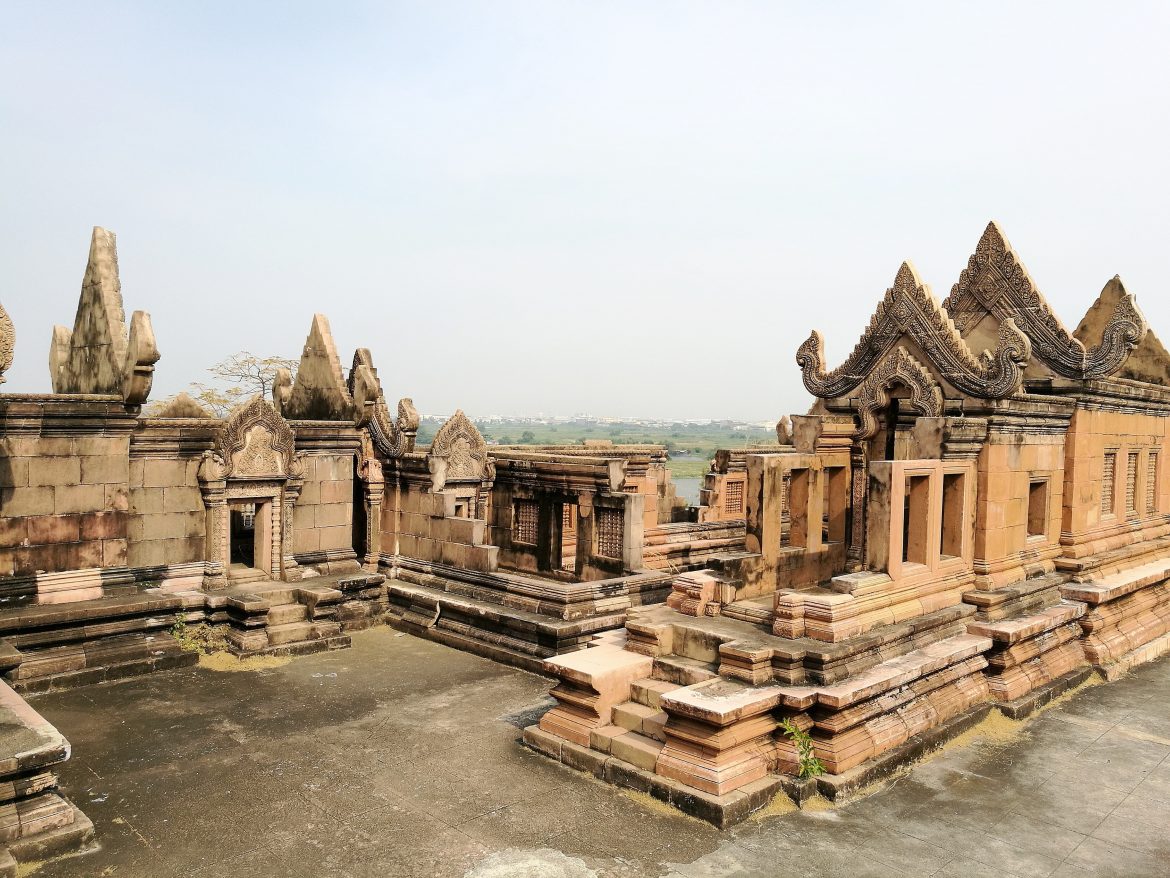
Prasat Preah Vihear
3. Phnom Kulen
Stationed approximately 50 km from the city of Siam Reap, Phnom Kulen is one of Cambodia’s most revered sacred mountains. This is also a mountain that holds many profound cultural, historical and religious meanings for the Khmer people.
Visitors can opt to stay at the temple before trekking through the rugged limestone plains and lush forests. Hidden deep within the forest, the imposing rock sculptures of Sra Dumrei add an enigmatic touch to the journey.
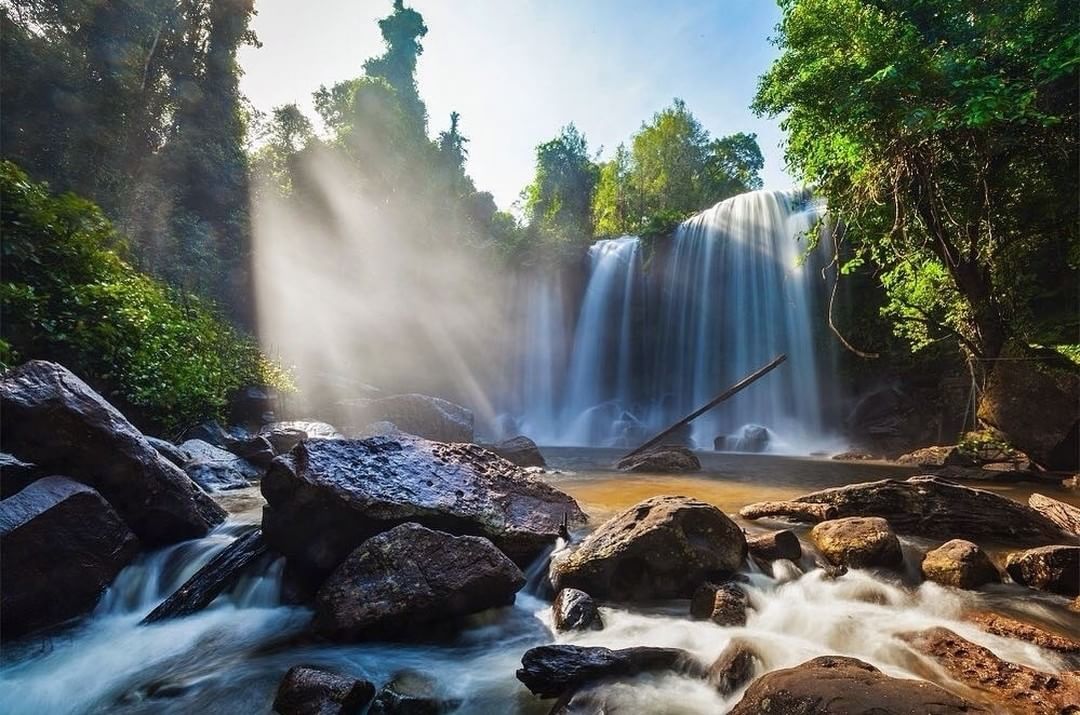
Phnom Kulen is one of Cambodia’s most revered sacred mountains – ©siemreap.net
One of the main highlights of Phnom Kulen is the River of 1000 Lingas. Thousands of Khmer stone slabs lie beneath the river’s surface, creating a mystical ambiance.
4. Bokor Hill Station
At the beginning of the 20th century, a luxurious town called Bokor Hill Station appeared on Bokor Hill with the purpose of being a resort for the French. This place offers beautiful views of rolling mountains and cool blue sea. In return, about 1,000 workers had to die in just 9 months of construction
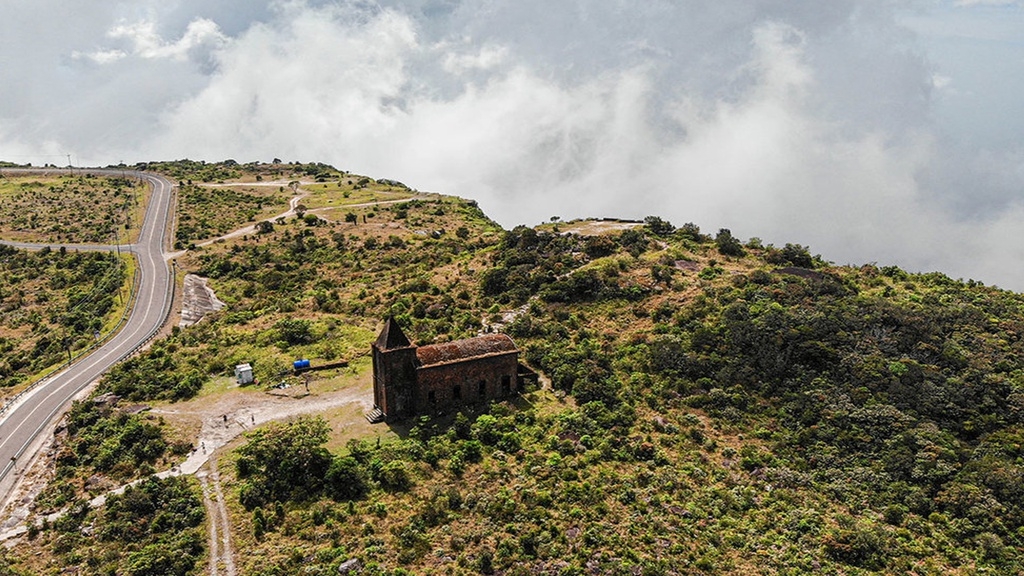
Bokor Hill – ©Amasiatravel
Since the French withdrew and the war broke out, the old buildings have become abandoned. By the 1990s, people referred to Bokor as “the strangest place in the world” and a “ghost city” because of its desolate and mysterious appearance.
After a long period of neglect, Bokor has become a touching historical emblem of Cambodia. Authorities retained a ranger station at the site, which is now in a national park, due to its strategic military importance. With the gradual establishment of peace and political stability, this site began to attract tourists seeking its historical appeal.
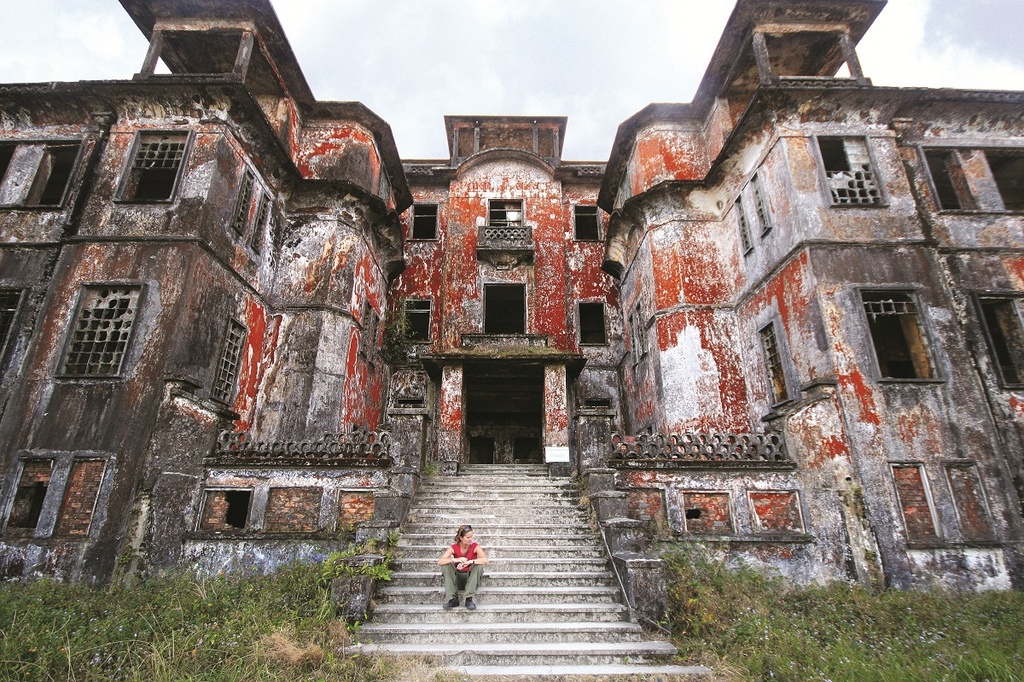
Bokor Hill is located in the wild Damrei Mountains of Preah Monivong National Park. The cruelty of time has turned this place into a desolate place where few people come – ©True Travel
If you are someone who loves to explore and is not afraid of challenges, this is a destination for you. The journey extends approximately 42 km by road from the nearest town, Kampot, a booming tourist center.
Highly recommend: Discover Exotic Lands and Enjoy the Warmth and Comfort of Cambodia’s Beaches 7 days
5. Tuol Sleng Genocide Museum – A museum of Khmer Rouge crimes in Cambodia
Genocide Museum were infamously used as places of torture by the Khmer Rouge regime. Before 1975, Tuol Sleng served as a high school, but with the rise of Pol Pot’s Khmer Rouge forces in May 1976, it underwent a harrowing transformation into a prison and interrogation center known as Security Office 21. According to documents from the Documentation Center of Cambodia, S21 was expressly designed for the sinister purposes of interrogation and annihilation.
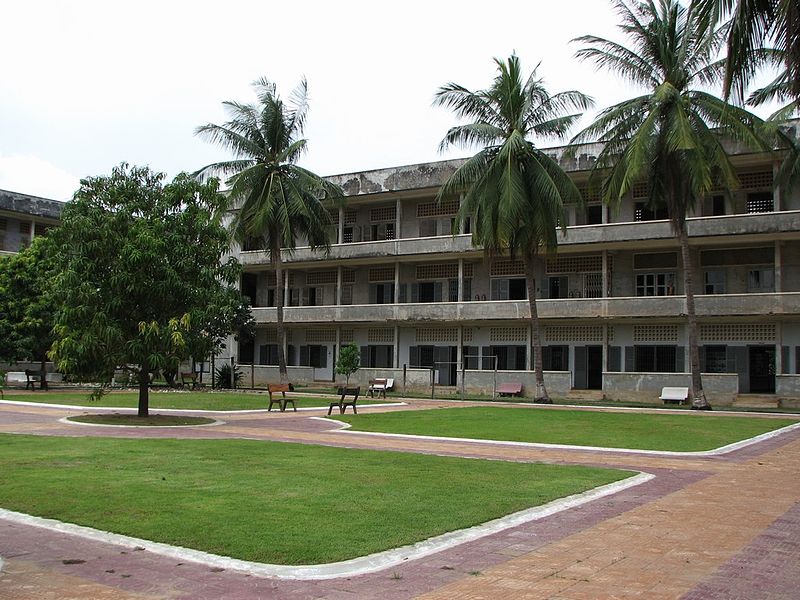
The building was used as a prison (S-21) and torture chamber. The prisoners were “interrogated” (tortured) in the building to the left. The large building is one of the prison cell complexes – ©BY-SA 3.0
The architecture includes four main blocks and a number of surrounding buildings. This was once the headquarters, interrogation room and torture room under the brutal Khmer Rouge government. Tuol Sleng Genocide Museum is a grim testament to this dark chapter of Cambodia’s history.
Inside the museum, visitors will see a series of torture instruments. Immersed in the space here, visitors may feel haunted by the ghosts of the past. Items that evoke those terrible memories also include old iron beds, old carpets, pliers, hammers and machine gun cartridges.
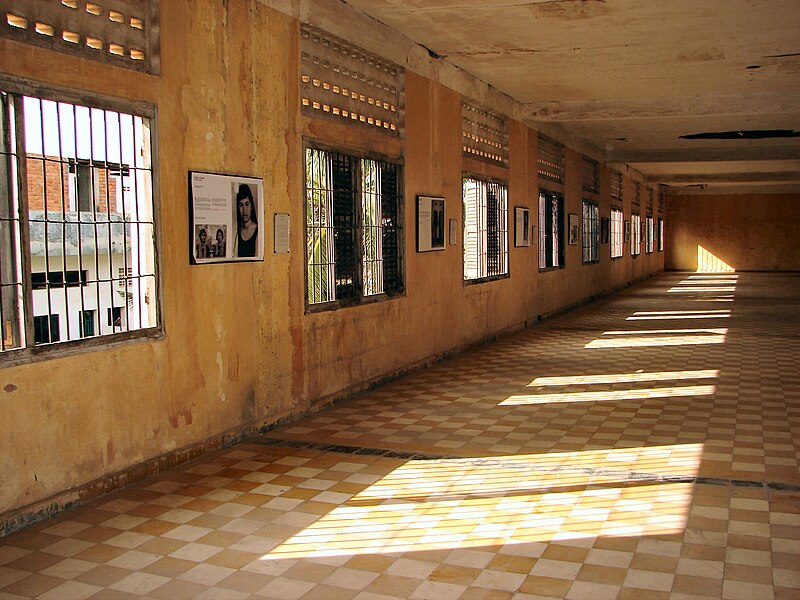
The rooms are mostly empty now, but posters on the wall tell the stories of those who suffered and perished here. The walls are also full of all kinds of stains and marks – ©BY-SA 4.0
A particularly haunting room in the Genocide Museum features a collection of artworks depicting scenes of brutal torture inflicted by the Khmer Rouge. These paintings leave a deep and lasting impression on any visitor, serving as a poignant reminder of the atrocities committed during this dark period.
6. The Killing Field of Choeung Ek
It can be said that the period under the Khmer Rouge regime was the saddest and most forgettable period of Cambodian history. Under the Khmer Rouge regime (1975-1979), right after the Cambodian civil war (1967–1975), many Cambodians were killed and buried in many locations collectively known as the Killing Fields. Estimates of the total number of deaths due to Khmer Rouge rule, including disease and starvation, range from 1.7 to 2.5 million while Cambodia’s population in 1975 was 8 million.
Choeung Ek is the site of a former orchard and mass grave of victims of the Khmer Rouge – killed between 1975 and 1979 – in Dangkao Section, Phnom Penh, Cambodia. This is the best-known of the sites known as the Killing Fields, where the Khmer Rouge regime executed over one million people between 1975 and 1979.
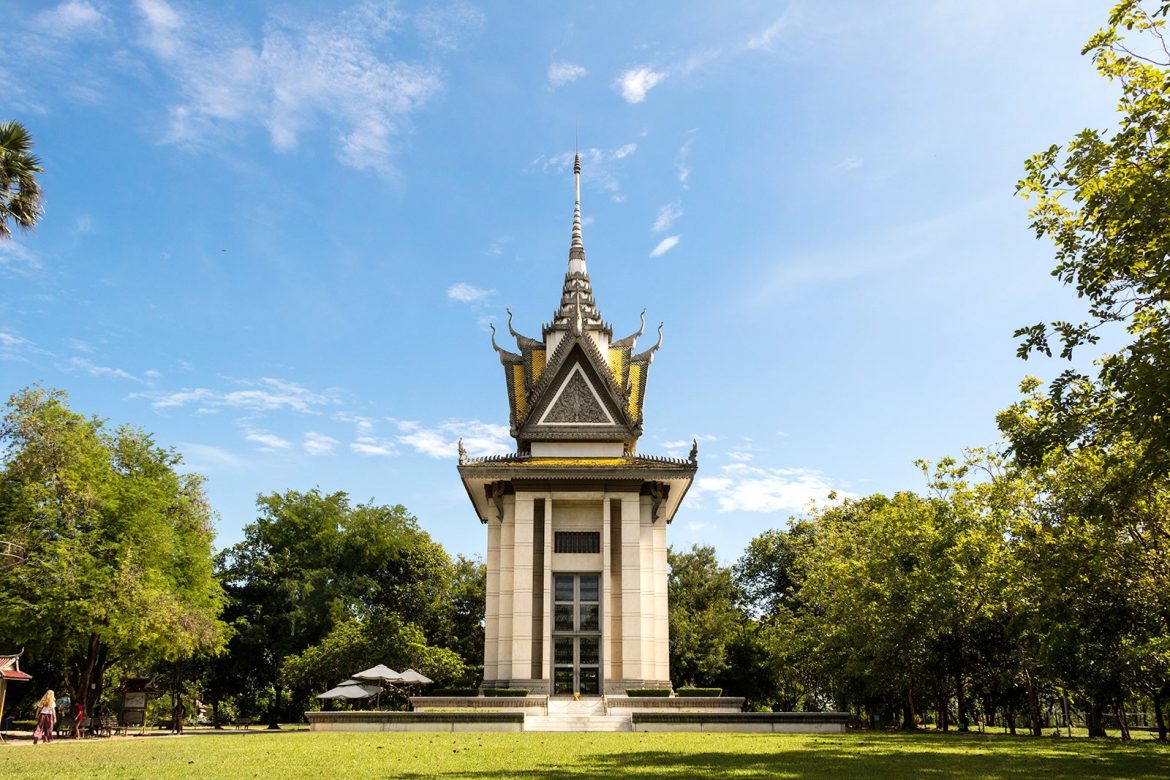
A commemorative stupa filled with the skulls of the victims at the Killing Field of Choeung Ek – ©Hotels.com
Please note that the area is loaded with harmful gases, which makes it unsuitable for welcoming children and people in poor health.
Choeung Ek and The Killing Fields hold an important place in the memory of Cambodians, serving as a spiritual sanctuary to honor and lay to rest the souls of those who endured immense suffering. Additionally, the site has become a must-visit destination for history buffs and explorers eager to immerse themselves in Cambodia’s tumultuous past.
7. Killing caves of Phnom Sampeau
No less frightening than The Killing Fields, is an area where the Khmer Rouge carried out macabre acts on human remains. Victims were taken to cavities at the top of the caves, where they met a brutal end, often beaten to death with sticks before their bodies were unceremoniously pushed into the caverns below.
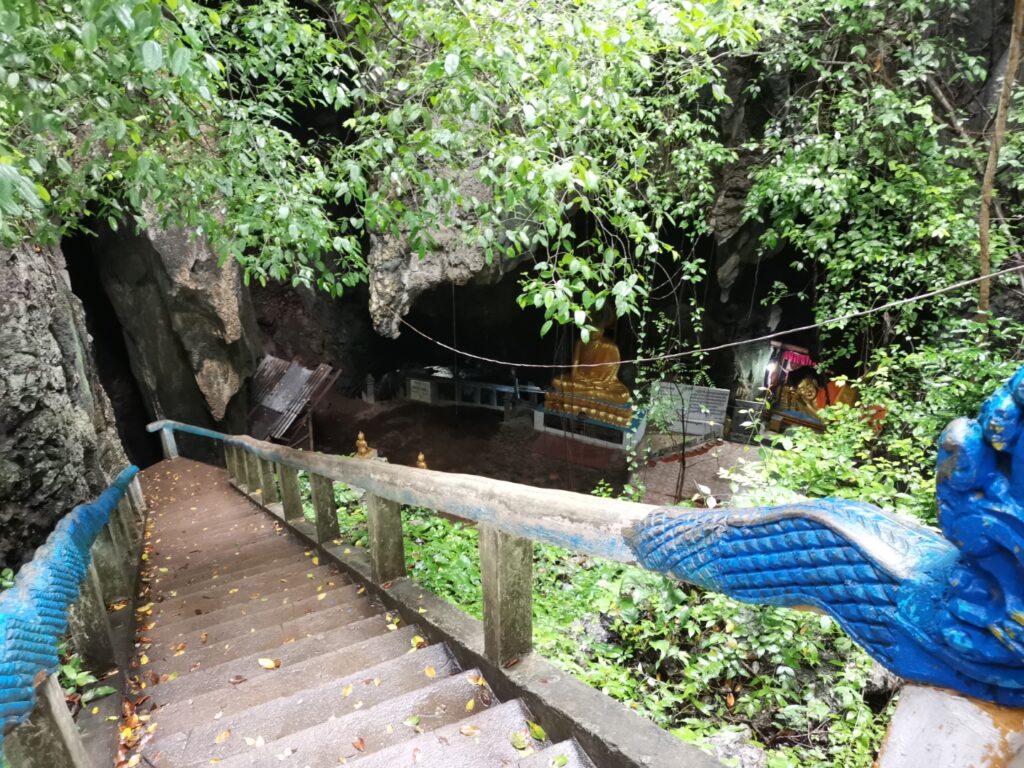
The way to the lower part of the Killing Caves – ©Siem Reap
Today, intrepid visitors travel to the haunting site of the Death Caves, preserved as a dark memorial to the countless souls who met a tragic fate in the depths of darkness. In these caverns, the bones of unidentified victims lie in glass enclosures, while other collections of skeletal remains are kept in wooden crates, as poignant reminders of the horrors of the past.
Highly recommend: Mixing Charm and Adventure in a Tour of Cambodia 12 days
Founded in 2005, Lux Travel DMC is leading Luxury Tour Operator 2023 by World Travel Awards. We provide 100% tailor-made private tours in Southeast Asia. The holiday is designed around your interest, time and budget. 99% of our former customers are satisfied with our service. Therefore, we have a lot of positive reviews on TripAdvisor. Please feel free to contact us to have direct consultation for planning a trip designed in your own way.
Contact Us
- Address: No.456 Lac Long Quan Street, Tay Ho District, Hanoi, Vietnam
- Phone: (+84) 24 3927 4120
- Email: sales@luxtraveldmc.com
- Hotline: +84-336-276-996
- Website: https://luxtraveldmc.com
